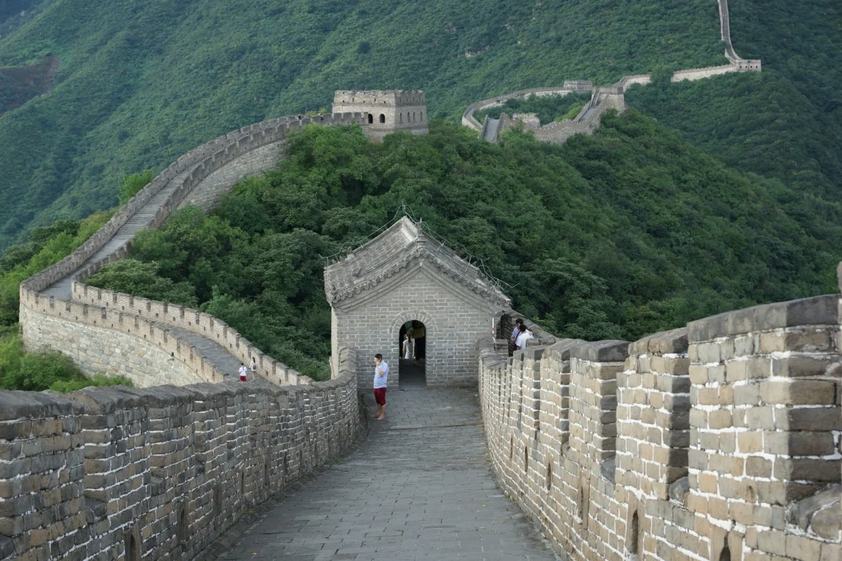The marvelous Great Wall of China is a cultural icon deeply entwined with myth and legend. The Wall has been a military defense structure, a symbol of imperial power, and now a tourist monument.
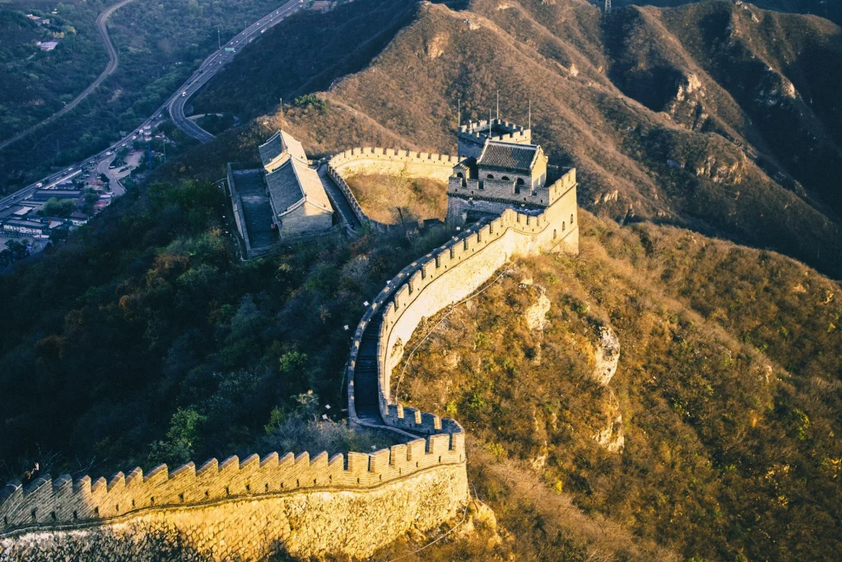 Ancient stories tell of a powerful sorcerer who shaped the Wall to ensure its invincibility with the aid of earth spirits and a white dragon. Countless lives were lost during its construction; there are several statues and temples dedicated to Meng Jiangnü, whose grief for her fallen husband is said to have caused a section of the Wall to collapse. The Wall is not just a feat of engineering but a timeless symbol of the nation’s rich heritage and, eventually, one of the world’s seven wonders.
Ancient stories tell of a powerful sorcerer who shaped the Wall to ensure its invincibility with the aid of earth spirits and a white dragon. Countless lives were lost during its construction; there are several statues and temples dedicated to Meng Jiangnü, whose grief for her fallen husband is said to have caused a section of the Wall to collapse. The Wall is not just a feat of engineering but a timeless symbol of the nation’s rich heritage and, eventually, one of the world’s seven wonders.
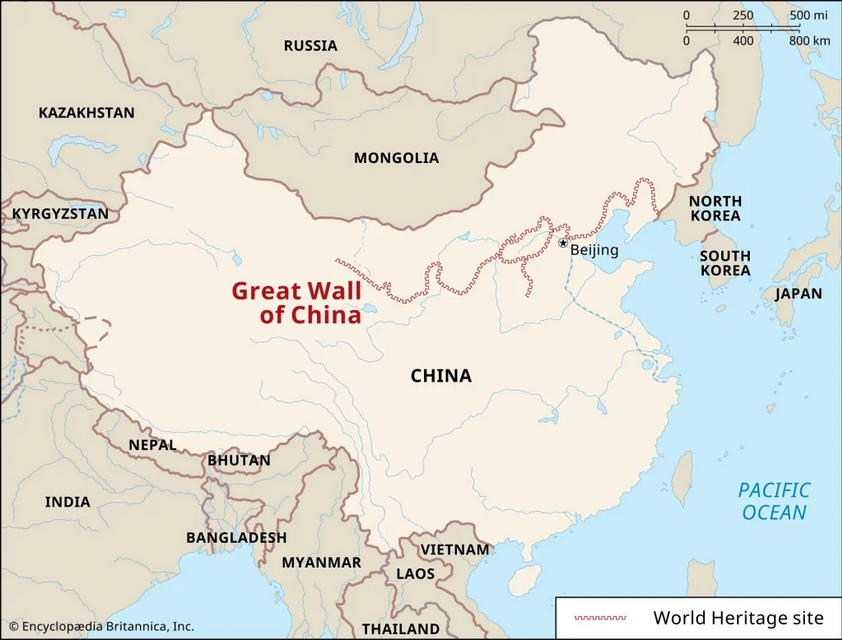 Spanning over 13,170 miles (21,196 kilometers), the Great Wall is the longest man-made structure in history. It was built over several dynasties, and many of its sections are located in desolate mountains, grasslands, or deserts.
Spanning over 13,170 miles (21,196 kilometers), the Great Wall is the longest man-made structure in history. It was built over several dynasties, and many of its sections are located in desolate mountains, grasslands, or deserts.
The Wall was initially built to protect the Chinese states and empires from invasions and raids by various nomadic tribes from the north, including the Xiongnu and later the Mongols. It also served in regulating and protecting trade and immigration along the Silk Road, therefore controlling the movement of goods and people across the border.
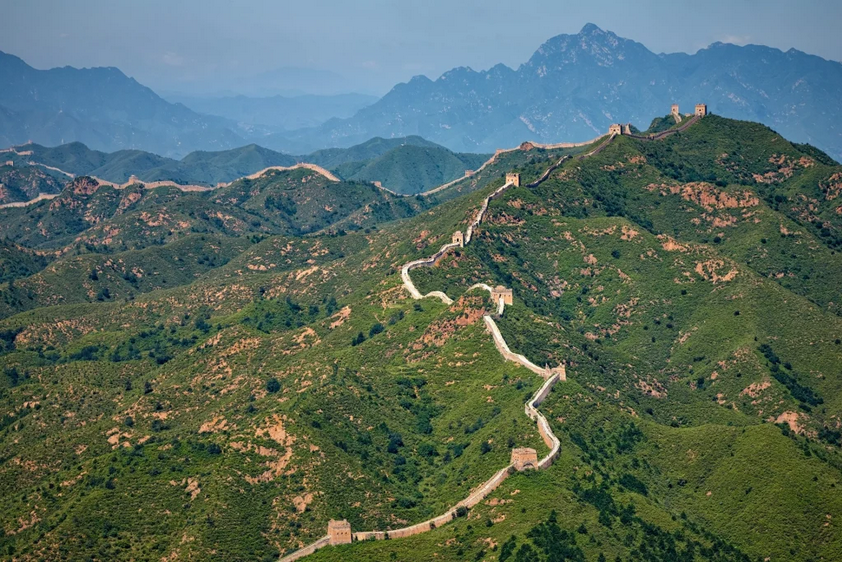 China was deeply fragmented in the seventh century BC, with ongoing conflicts between its different states. These early walls were primarily built with rammed earth and wood, materials that were abundant and easy to work with. The fragmented walls were simple structures, meant to slow down or deter invaders rather than completely stop them. Signal towers were built for improved communication. In some areas, stone was utilized to enhance durability.
China was deeply fragmented in the seventh century BC, with ongoing conflicts between its different states. These early walls were primarily built with rammed earth and wood, materials that were abundant and easy to work with. The fragmented walls were simple structures, meant to slow down or deter invaders rather than completely stop them. Signal towers were built for improved communication. In some areas, stone was utilized to enhance durability.
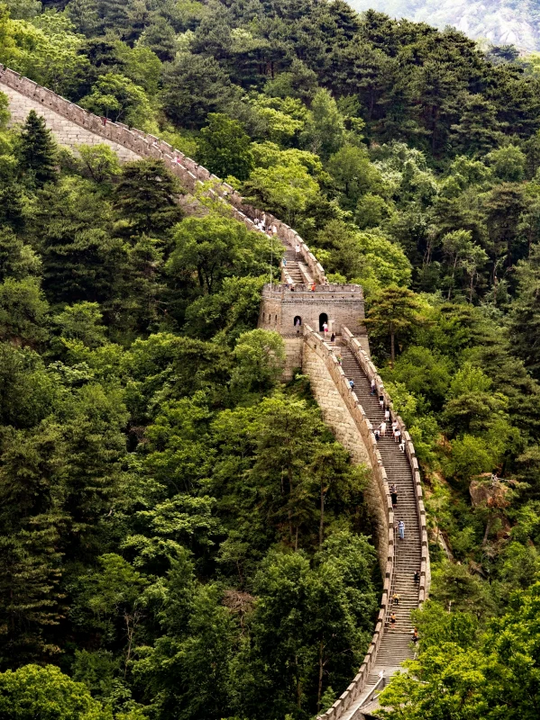 Tourist interest in the Great Wall of China began in the late 19th and early 20th centuries, but its global recognition didn’t happen until its formal opening in 1957. The construction techniques adopted in the restoration process were a blend of craftsmanship and contemporary methods to preserve the Wall’s enduring legacy as a cultural treasure. Bricks and cut stone blocks were commonly used to restore eroded sections, particularly in areas where the original Wall was built with similar materials. In cases where bricks and stone were not available, rammed earth and uncut stones were employed, following traditional methods. Lime mortar was typically used.
Tourist interest in the Great Wall of China began in the late 19th and early 20th centuries, but its global recognition didn’t happen until its formal opening in 1957. The construction techniques adopted in the restoration process were a blend of craftsmanship and contemporary methods to preserve the Wall’s enduring legacy as a cultural treasure. Bricks and cut stone blocks were commonly used to restore eroded sections, particularly in areas where the original Wall was built with similar materials. In cases where bricks and stone were not available, rammed earth and uncut stones were employed, following traditional methods. Lime mortar was typically used.
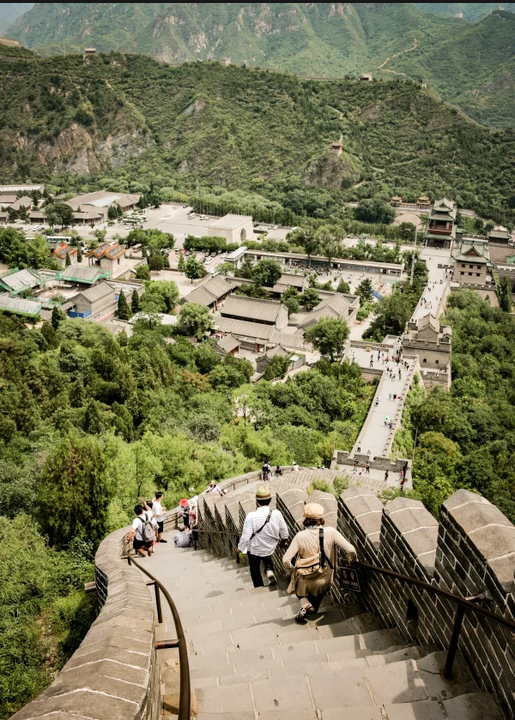 You can read the original article at parametric-architecture.com
You can read the original article at parametric-architecture.com

